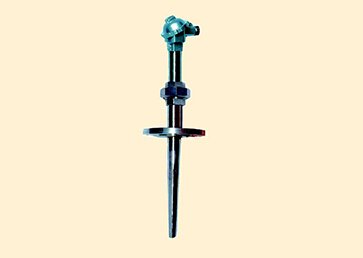
Principle
A thermocouple is a temperature sensor that operates based on the thermoelectric effect. It consists of two dissimilar metal or alloy conductors joined at one junction. When there is a temperature difference between this junction and the other ends, a thermoelectric voltage (EMF) is generated, which correlates directly with the temperature. By measuring this voltage, the temperature at the junction can be determined.
A high-temperature high-pressure thermocouple is specially designed to withstand extreme environments involving elevated temperatures (up to several thousand degrees Celsius) and high pressures (tens of atmospheres or more). While its fundamental working principle remains the same as standard thermocouples, its materials and construction ensure stability and durability under these harsh conditions.
Applications
High-temperature high-pressure thermocouples are widely used for temperature monitoring in various industrial sectors, including but not limited to:
- Power Generation: Monitoring boiler and steam generator temperatures.
- Petrochemical Industry: Measuring temperature in high-pressure reactors, cracking furnaces, and catalytic converters.
- Metallurgy: High-temperature furnaces, smelting, and heat treatment processes.
- Aerospace: Monitoring exhaust temperatures of jet engines.
- Scientific Research: Experiments requiring precise temperature measurements under extreme conditions.
Materials
To ensure reliability and longevity in harsh environments, the following materials are commonly used:
- Thermocouple Conductors
- Common thermocouple types: Type K (Nickel-Chromium / Nickel-Silicon), Type S (Platinum-Rhodium 10% / Platinum), Type B (Platinum-Rhodium 30% / Platinum-Rhodium 6%).
- Types S and B are preferred for very high-temperature applications, capable of measuring temperatures above 1700°C.
- Protective Sheath Materials
- The sheath protects the thermocouple wires from mechanical damage and corrosive environments.
- Typical materials include stainless steel (e.g., 316L), nickel-based alloys (e.g., Inconel 600, Inconel 625), and ceramic sheaths.
- Ceramic sheaths are used in extremely high-temperature or electrically insulating applications.
- Insulation Materials
- The conductors are insulated from each other, often with high-purity magnesium oxide (MgO) powder or alumina ceramic, which can withstand high temperatures and pressures.
- Sealing and Connection Materials
- High-pressure seals often use threaded fittings or welded joints made from corrosion-resistant metals to maintain pressure integrity.
Structural Features
- Reinforced Protective Sheath: Typically multilayered with filler materials to provide mechanical strength and electrical insulation.
- Sealing Design: Ensures no leakage under high-pressure conditions using robust mechanical or welded seals.
- Durability: Materials are selected to minimize oxidation and aging, extending service life.
Summary Table
| Aspect | Description |
|---|---|
| Principle | Temperature measurement via thermoelectric voltage generation |
| Operating Environment | High temperatures (up to ~1700°C and above) and high pressures |
| Applications | Power plants, petrochemical reactors, metallurgy, aerospace, research |
| Thermocouple Types | K, S, B (depending on temperature range and environment) |
| Protective Sheath | Stainless steel, nickel-based alloys (Inconel), ceramics |
| Insulation | Magnesium oxide powder, alumina ceramics |
| Key Structural Features | Multi-layer protection, sealed joints, durable materials |
